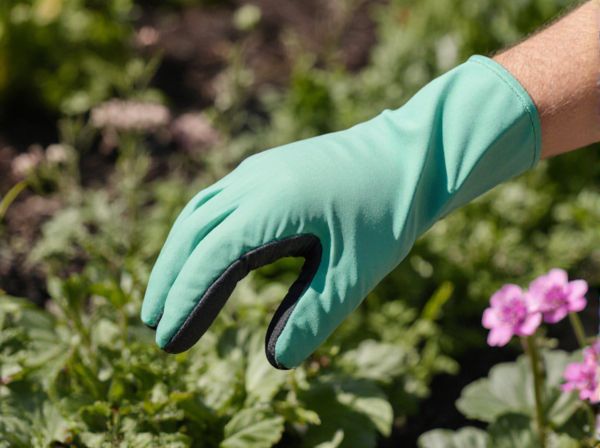
Viability testing vs Germination testing Illustration
Viability testing assesses the potential of seeds to live and develop under optimal conditions, measuring metabolic activity or embryo health, while germination testing evaluates the actual percentage of seeds that successfully sprout over a set period. Viability testing provides quicker results and helps determine seed lot quality when immediate germination is not feasible. Germination testing offers a practical insight into seed performance under specific environmental conditions, confirming the seeds' ability to produce viable seedlings.
Table of Comparison
| Aspect | Viability Testing | Germination Testing |
|---|---|---|
| Purpose | Determines if seeds are alive and capable of growing. | Measures the percentage of seeds that successfully sprout under optimal conditions. |
| Method | Uses chemical stains or cutting to assess living tissues. | Involves planting seeds and monitoring seedling emergence over a set period. |
| Time Required | Short, usually 24-48 hours. | Longer, typically 7-21 days depending on species. |
| Result Output | Percentage of viable seeds. | Percentage of germinated seeds. |
| Use Case | Quick assessment for seed lot quality. | Determining actual seed performance in the field. |
| Accuracy | High for seed life status but may overestimate growth potential. | Higher accuracy for predicting field emergence and crop establishment. |
Understanding Seed Viability and Germination
Seed viability testing measures the living potential of seeds by assessing their ability to remain alive under favorable conditions, often using tetrazolium staining or X-ray analysis to determine internal seed health. Germination testing evaluates the seed's ability to sprout and develop into seedlings under controlled environmental conditions, reflecting practical field performance. Understanding both testing methods provides comprehensive insights into seed quality, optimizing agricultural productivity and seed storage strategies.
Key Differences Between Viability and Germination Testing
Viability testing determines the potential of seeds to remain alive and capable of germination under optimal conditions, often using biochemical or tetrazolium tests. Germination testing measures the actual ability of seeds to sprout and produce normal seedlings within a specific time frame under controlled environmental conditions. Key differences include viability tests assessing seed life status without necessarily causing sprouting, while germination tests confirm functional seed health by tracking actual seedling development.
Why Test Seeds: Viability vs Germination
Seed viability testing measures the potential of seeds to remain alive and capable of germination over time, ensuring the seed lot maintains its quality during storage. Germination testing evaluates the percentage of seeds that successfully sprout under optimal conditions, reflecting the seed's immediate performance in the field. Distinguishing between viability and germination tests helps seed producers optimize storage strategies and predict crop establishment success accurately.
Methods for Seed Viability Testing
Seed viability testing methods include the tetrazolium test, which uses a colorimetric reaction to detect living tissues, and the cutting test, where seeds are physically dissected to observe embryo condition. X-ray analysis offers a non-destructive option by revealing internal seed structures and damage. These methods provide faster and often more accurate assessments of seed viability compared to traditional germination tests.
Techniques for Seed Germination Testing
Seed germination testing techniques include methods such as the paper towel, agar plate, and sand bed tests, each providing controlled environments to assess seed sprouting under optimal conditions. Viability testing often involves tetrazolium staining to detect living tissue, while germination tests evaluate actual seedling emergence, offering direct evidence of seed performance potential. Accurate germination testing utilizes parameters like temperature, moisture, and light to simulate natural growth, ensuring reliable prediction of seedling establishment rates.
Pros and Cons of Viability Testing
Viability testing assesses the potential of seeds to germinate by evaluating their physiological state, offering rapid and accurate results that are crucial for effective seed lot management and quick decision-making. This method can detect dormant or non-germinating viable seeds that germination tests might miss, ensuring a comprehensive evaluation of seed quality. However, viability testing requires specialized equipment and expertise, making it more costly and less accessible compared to the simpler, more traditional germination testing approach.
Pros and Cons of Germination Testing
Germination testing provides direct insight into seed viability by measuring the percentage of seeds that successfully sprout under controlled conditions, ensuring reliable predictions of crop yield. However, it requires considerable time and specific environmental controls, making it less efficient for rapid viability assessment compared to viability testing methods like tetrazolium assays. While germination testing offers practical relevance for farmers by simulating real growth potential, its longer duration and resource intensity can limit its use in large-scale seed quality evaluations.
When to Use Viability Testing Over Germination
Viability testing is essential when seeds may be dormant or stressed, providing a more accurate assessment of potential growth than germination tests alone. Use viability testing over germination testing when seed lots have unknown dormancy or when quick, reliable results are needed for decision-making. This method is preferred in seed certification and quality control where understanding true seed potential before planting is critical.
Interpreting Test Results for Seed Selection
Viability testing measures the proportion of live seeds capable of germination, identifying dormant but viable seeds that germination tests might miss. Germination testing evaluates the actual seed sprouting under optimal conditions, reflecting practical field performance more directly. Interpreting both results together enables precise seed selection by distinguishing between seeds alive but dormant and those that will readily establish seedlings.
Best Practices for Reliable Seed Testing
Viability testing measures the percentage of live seeds capable of germination using biochemical assays, ensuring accurate assessment beyond visible growth potential. Germination testing monitors actual seed sprout development under controlled conditions, confirming seed performance in real-world planting scenarios. Combining both methods with standardized protocols such as ISTA regulations enhances reliability, preventing inaccurate seed lot evaluations and ensuring optimal crop establishment.
Viability testing vs Germination testing Infographic

 gardendif.com
gardendif.com